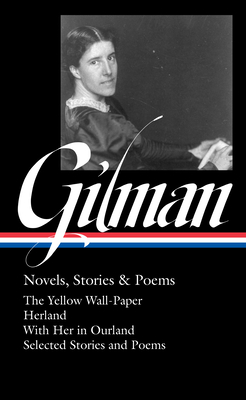


Books in series

Typee, Omoo, Mardi
1982

Nathaniel Hawthorne
Tales and Sketches
1982

Harriet Beecher Stowe
Three Novels
1852

Herman Melville
Redburn, White-Jacket, Moby-Dick
1851

Nathaniel Hawthorne
Collected Novels
1983

Thomas Jefferson
Writings
1984

Writings
The Suppression of the African Slave-Trade / The Souls of Black Folk / Dusk of Dawn / Essays and Articles
1986

Charlotte Perkins Gilman
Novels, Stories & Poems
2022

Wendell Berry
Port William Novels & Stories: The Postwar Years (LOA #381)
2024
Authors

In 1868, William Edward Burghardt Du Bois (pronounced 'doo-boyz') was born in Massachusetts. He attended Fisk College in Nashville, then earned his BA in 1890 and his MS in 1891 from Harvard. Du Bois studied at the University of Berlin, then earned his doctorate in history from Harvard in 1894. He taught economics and history at Atlanta University from 1897-1910. The Souls of Black Folk (1903) made his name, in which he urged black Americans to stand up for their educational and economic rights. Du Bois was a founder of the National Association for the Advancement of Colored People, and edited the NAACP's official journal, "Crisis," from 1910 to 1934. Du Bois turned "Crisis" into the foremost black literary journal. The black nationalist expanded his interests to global concerns, and is called the "father of Pan-Africanism" for organizing international black congresses. Although he used some religious metaphor and expressions in some of his books and writings, Du Bois called himself a freethinker. In "On Christianity," a posthumously published essay, Du Bois critiqued the black church: "The theology of the average colored church is basing itself far too much upon 'Hell and Damnation'—upon an attempt to scare people into being decent and threatening them with the terrors of death and punishment. We are still trained to believe a good deal that is simply childish in theology. The outward and visible punishment of every wrong deed that men do, the repeated declaration that anything can be gotten by anyone at any time by prayer." Du Bois became a member of the Communist Party and officially repudiated his U.S. citizenship at the end of his life, dying in his adopted country of Ghana. D. 1963. More: http://www.britannica.com/EBchecked/t... http://www.pbs.org/wnet/jimcrow/stori... http://www.math.buffalo.edu/~sww/0his... http://www.americaslibrary.gov/aa/dub...


There is more than one author with this name Herman Melville was an American novelist, short story writer, essayist, and poet. His first two books gained much attention, though they were not bestsellers, and his popularity declined precipitously only a few years later. By the time of his death he had been almost completely forgotten, but his longest novel, Moby Dick—largely considered a failure during his lifetime, and most responsible for Melville's fall from favor with the reading public—was rediscovered in the 20th century as one of the chief literary masterpieces of both American and world literature.

Nathaniel Hawthorne was a 19th century American novelist and short story writer. He is seen as a key figure in the development of American literature for his tales of the nation's colonial history. Shortly after graduating from Bowdoin College, Hathorne changed his name to Hawthorne. Hawthorne anonymously published his first work, a novel titled Fanshawe, in 1828. In 1837, he published Twice-Told Tales and became engaged to painter and illustrator Sophia Peabody the next year. He worked at a Custom House and joined a Transcendentalist Utopian community, before marrying Peabody in 1842. The couple moved to The Old Manse in Concord, Massachusetts, later moving to Salem, the Berkshires, then to The Wayside in Concord. The Scarlet Letter was published in 1850, followed by a succession of other novels. A political appointment took Hawthorne and family to Europe before returning to The Wayside in 1860. Hawthorne died on May 19, 1864, leaving behind his wife and their three children. Much of Hawthorne's writing centers around New England and many feature moral allegories with a Puritan inspiration. His work is considered part of the Romantic movement and includes novels, short stories, and a biography of his friend, the United States President Franklin Pierce.

Charlotte Perkins Gilman, also known as Charlotte Perkins Stetson, was a prominent American sociologist, novelist, writer of short stories, poetry, and nonfiction, and a lecturer for social reform. She was a utopian feminist during a time when her accomplishments were exceptional for women, and she served as a role model for future generations of feminists because of her unorthodox concepts and lifestyle. Her best remembered work today is her semi-autobiographical short story, "The Yellow Wallpaper", which she wrote after a severe bout of post-partum depression. She was the daughter of Frederic B. Perkins.